ART NEWS:Jan.03
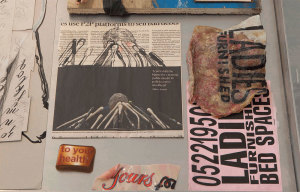 Working with sound, light, scale and temperature the exhibition “CONSTITUTION” builds on, Ghislaine Leung’s ongoing enquiry into withdrawal and dependency. Taking active cancellation in sound as an initial structure, Leung’s new body of work considers moves from closed systems to complex commons. A new sound work explores the spatial possibilities of active sound cancellation, a method used in the design of noise-cancelling headphones in order to eliminate unwanted environmental sounds. In bringing sound cancellation into an open system, sound here is not isolated in fidelity, but is instead altered in volume and intensity dependant on the audience’s position in the gallery space. The exhibition also includes a series of architectural adjustments made to the gallery space, alongside sculptures and a moving image work, highlighting acts of dependency through the circulation of self-contained and shared energy. Info: Chisenhale Gallery, 64 Chisenhale Road, London, Duration: 25/1-2/3/19, Days & Hours: Wed-Sun 12:00-18:00, https://chisenhale.org.uk
Working with sound, light, scale and temperature the exhibition “CONSTITUTION” builds on, Ghislaine Leung’s ongoing enquiry into withdrawal and dependency. Taking active cancellation in sound as an initial structure, Leung’s new body of work considers moves from closed systems to complex commons. A new sound work explores the spatial possibilities of active sound cancellation, a method used in the design of noise-cancelling headphones in order to eliminate unwanted environmental sounds. In bringing sound cancellation into an open system, sound here is not isolated in fidelity, but is instead altered in volume and intensity dependant on the audience’s position in the gallery space. The exhibition also includes a series of architectural adjustments made to the gallery space, alongside sculptures and a moving image work, highlighting acts of dependency through the circulation of self-contained and shared energy. Info: Chisenhale Gallery, 64 Chisenhale Road, London, Duration: 25/1-2/3/19, Days & Hours: Wed-Sun 12:00-18:00, https://chisenhale.org.uk
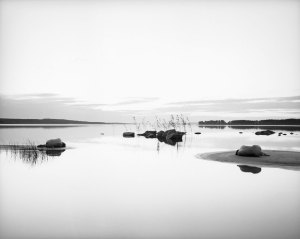 The Finnish American photographer Arno Rafael Minkkinen in his solo exhibition “Earthbound” presents a selection of recent photographs. He was born in Helsinki in 1945 and emigrated to the United States in 1951. Graduating from Wagner College in 1967 with a BA in English Literature, he began taking self-portraits four years later while working as an advertising copywriter. Minolta, Peugeot, and J&B Scotch were among his key clients. One headline he wrote guided him to consider photography seriously: “What happens inside your mind can happen inside a camera.” In the summer of 1971 Minkkinen enrolled at Apeiron Photographic Workshops in Millerton, NY to study with John Benson. It’s where Minkkinen decided to let the camera be the photographer while he became the subject. His studies advanced later with Ken Heyman, George Tice, and Ralph Hattersley as he continued hammering out headlines on Madison Avenue. In 1972 Minkkinen entered Rhode Island School of Design to study with Harry Callahan and Aaron Siskind, earning an MFA degree in photography in 1974. Info: La Patinoire Royale-Galerie Valérie Bach, rue Veydt 15, Brussels, Duration: 25/1-23/3/19, Days & Hours: Tue-Sat 11:00-18:00, www.prvbgallery.com
The Finnish American photographer Arno Rafael Minkkinen in his solo exhibition “Earthbound” presents a selection of recent photographs. He was born in Helsinki in 1945 and emigrated to the United States in 1951. Graduating from Wagner College in 1967 with a BA in English Literature, he began taking self-portraits four years later while working as an advertising copywriter. Minolta, Peugeot, and J&B Scotch were among his key clients. One headline he wrote guided him to consider photography seriously: “What happens inside your mind can happen inside a camera.” In the summer of 1971 Minkkinen enrolled at Apeiron Photographic Workshops in Millerton, NY to study with John Benson. It’s where Minkkinen decided to let the camera be the photographer while he became the subject. His studies advanced later with Ken Heyman, George Tice, and Ralph Hattersley as he continued hammering out headlines on Madison Avenue. In 1972 Minkkinen entered Rhode Island School of Design to study with Harry Callahan and Aaron Siskind, earning an MFA degree in photography in 1974. Info: La Patinoire Royale-Galerie Valérie Bach, rue Veydt 15, Brussels, Duration: 25/1-23/3/19, Days & Hours: Tue-Sat 11:00-18:00, www.prvbgallery.com
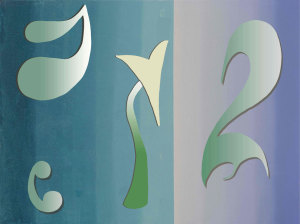 The new paintings and sculptures that comprise Mark Hadjipateras’ solo exhibition “New sculptures and paintings” contain many of the features recognizable in the artist’s practice: biosynthetic creatures, enigmatic objects and symbols, indeterminate topographies, and, of course, his characteristic playfulness. In the paintings, crisp bands of gradated or flat color fields evoke curiously furnished rooms or horizon lines separating skies from uncharted seas and lands that support unidentifiable life forms. The cast aluminium sculptures take their forms from the paintings, in some cases directly and elsewhere less so. At 50cm tall, they are the comforting height of family pets. Like the shapes and creatures in the paintings, they conjure up plants, trees, lighting fixtures, furniture, marine life, birds, small predators, hieroglyphs, and obscure sacred objects. As autonomous and free-standing, unlike their two-dimensional counterparts, their presence and provenance is even more ambiguous. Info: a.antonopoulou.art, 20 Aristofanous Street, 4th floor, Psyrri, Athens, Duration: 25/1-2/3/19, Days & Hours: Wed-Fri 14:00-20:00, Sat 12:00-16:00, http://www.aaart.gr
The new paintings and sculptures that comprise Mark Hadjipateras’ solo exhibition “New sculptures and paintings” contain many of the features recognizable in the artist’s practice: biosynthetic creatures, enigmatic objects and symbols, indeterminate topographies, and, of course, his characteristic playfulness. In the paintings, crisp bands of gradated or flat color fields evoke curiously furnished rooms or horizon lines separating skies from uncharted seas and lands that support unidentifiable life forms. The cast aluminium sculptures take their forms from the paintings, in some cases directly and elsewhere less so. At 50cm tall, they are the comforting height of family pets. Like the shapes and creatures in the paintings, they conjure up plants, trees, lighting fixtures, furniture, marine life, birds, small predators, hieroglyphs, and obscure sacred objects. As autonomous and free-standing, unlike their two-dimensional counterparts, their presence and provenance is even more ambiguous. Info: a.antonopoulou.art, 20 Aristofanous Street, 4th floor, Psyrri, Athens, Duration: 25/1-2/3/19, Days & Hours: Wed-Fri 14:00-20:00, Sat 12:00-16:00, http://www.aaart.gr
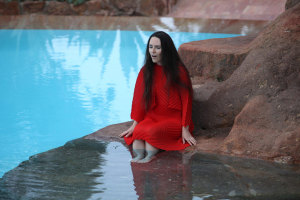 Emma Dusong developed new studies for her solo exhibition “La voix libre”. She envisages artworks, venue and exhibition as a whole. She stages a cycle, an accelerated simulacre of a day, which fills artworks with temporal life and transforms the gallery into a cocoon. When L’observatoire is active, Classe remains silent and vice-versa. Moreover, the alternating luminous ambiance, passing from day to night, reinforces the impression of a day within a day. Emma Dusong ventures into more complex experimentations than exhibition layout alone and is not content to limit herself merely to structuring space. Visitors find themselves caught up in a genuine choreography of works. The access to the exhibition is symptomatic of this: visitors must walk through a projection, erasing the image which then becomes a ghost. In this way we understand that the parallel and intimate world of Emma Dusong is built in evanescence. Info: Galerie Les Filles du Calvaire, 17 rue des Filles-du-Calvaire, Paris, Duration: 26/1-23/2/19, Days & Hours: Tue-Sat 11:00-18:30, www.fillesducalvaire.com/
Emma Dusong developed new studies for her solo exhibition “La voix libre”. She envisages artworks, venue and exhibition as a whole. She stages a cycle, an accelerated simulacre of a day, which fills artworks with temporal life and transforms the gallery into a cocoon. When L’observatoire is active, Classe remains silent and vice-versa. Moreover, the alternating luminous ambiance, passing from day to night, reinforces the impression of a day within a day. Emma Dusong ventures into more complex experimentations than exhibition layout alone and is not content to limit herself merely to structuring space. Visitors find themselves caught up in a genuine choreography of works. The access to the exhibition is symptomatic of this: visitors must walk through a projection, erasing the image which then becomes a ghost. In this way we understand that the parallel and intimate world of Emma Dusong is built in evanescence. Info: Galerie Les Filles du Calvaire, 17 rue des Filles-du-Calvaire, Paris, Duration: 26/1-23/2/19, Days & Hours: Tue-Sat 11:00-18:30, www.fillesducalvaire.com/
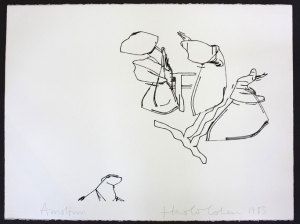 The first solo exhibition in Germany with work by Harold Cohen is entitled “Aaron”. Harold Cohen was an internationally established painter, when he began at the end of the 1960s to explore creative possibilities using computers. This was triggered by his move from London to California caused by accepting a teaching position at the University of California, San Diego. In 1973, he began developing a system called AARON that, based on formal rules, autonomously generated drawings and paintings of increasing complexity over almost four decades. Though it was praised by “Artificial Intelligence” research, Cohen abandoned the system when he felt it had lead him into a dead-end. He returned to algorithms when he observed that his painting machine was attracting people’s attention more than his works. Cohen’s programmed drawings evolved from archaic abstractions, inspired by petroglyphs of the Mojave Dessert, to figurative images of humans. The series exhibited in the show was done for an exhibition 1983 at the Arnolfini in Bristol, UK. Info: DAM Gallery, Seydelstr. 30 Ecke Elisabeth-Mara-Strasse, Berlin, Duration: 26/1-16/3/19, Days & Hours: wed-Fri 13:00-18:00, Sat 12:00-16:00, https://dam-gallery.de
The first solo exhibition in Germany with work by Harold Cohen is entitled “Aaron”. Harold Cohen was an internationally established painter, when he began at the end of the 1960s to explore creative possibilities using computers. This was triggered by his move from London to California caused by accepting a teaching position at the University of California, San Diego. In 1973, he began developing a system called AARON that, based on formal rules, autonomously generated drawings and paintings of increasing complexity over almost four decades. Though it was praised by “Artificial Intelligence” research, Cohen abandoned the system when he felt it had lead him into a dead-end. He returned to algorithms when he observed that his painting machine was attracting people’s attention more than his works. Cohen’s programmed drawings evolved from archaic abstractions, inspired by petroglyphs of the Mojave Dessert, to figurative images of humans. The series exhibited in the show was done for an exhibition 1983 at the Arnolfini in Bristol, UK. Info: DAM Gallery, Seydelstr. 30 Ecke Elisabeth-Mara-Strasse, Berlin, Duration: 26/1-16/3/19, Days & Hours: wed-Fri 13:00-18:00, Sat 12:00-16:00, https://dam-gallery.de
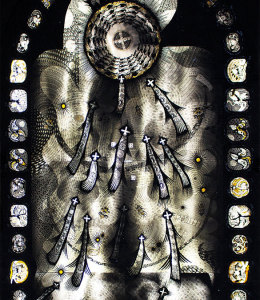 For Eric Benetto the discovery (at the age of 17) of the coal miner Augustin Lesage’s mediumistic work was a veritable epiphany. His encounter with Father Coutant, who became a painter himself thanks to his friend Gaston Chaissac, marked him just as much. Profoundly meditative, fundamentally distrustful, Benetto finally understood that his feeling of exile would find an unexpected outlet in art. While the patterns are repeated ad libitum and the serial incantations spread out like a primordial om, the artist gives shape to what Romain Rolland used to call the “oceanic feeling” this formidable thirst for osmosis with the universe. In the case of Benetto, it stretches from limbo to men. Particularly when his assemblages of magnetic resonance images are studded with the negatives of photographs of those whom he calls his “earthly family”, or when the memorial peregrination is coupled with a redemptive impulse. And what can we say about the organs, liberated from their condition, reinvented, poeticized, sublimated. Info: christian berst art brut, 3-5 passage des Gravilliers, Paris, Duration: 26/1-2/3/19, Days & Hours: Tue-Sat 14:00-19:00, www.christianberst.com
For Eric Benetto the discovery (at the age of 17) of the coal miner Augustin Lesage’s mediumistic work was a veritable epiphany. His encounter with Father Coutant, who became a painter himself thanks to his friend Gaston Chaissac, marked him just as much. Profoundly meditative, fundamentally distrustful, Benetto finally understood that his feeling of exile would find an unexpected outlet in art. While the patterns are repeated ad libitum and the serial incantations spread out like a primordial om, the artist gives shape to what Romain Rolland used to call the “oceanic feeling” this formidable thirst for osmosis with the universe. In the case of Benetto, it stretches from limbo to men. Particularly when his assemblages of magnetic resonance images are studded with the negatives of photographs of those whom he calls his “earthly family”, or when the memorial peregrination is coupled with a redemptive impulse. And what can we say about the organs, liberated from their condition, reinvented, poeticized, sublimated. Info: christian berst art brut, 3-5 passage des Gravilliers, Paris, Duration: 26/1-2/3/19, Days & Hours: Tue-Sat 14:00-19:00, www.christianberst.com
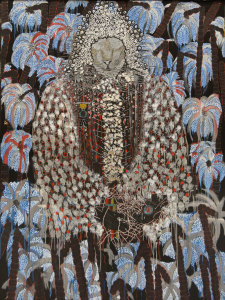 Omar Ba’s works confronts us with some of the most urgent issues of our present, from the growing inequality of wealth and power across society to questions around immigration, post-colonial relations and our changing relationship to the natural world. The exhibition “Same Dream” which is Omar Ba’s first institutional solo exhibition brings together several works from his series on dictators who maintain and generate the corruption in many countries where the legacies of colonialism persist. These despotic warlords, at times represented as fantastical beasts, are often enveloped by an abundance of lush flora and fauna, as the beauty of the natural world appears to endure despite inhumane atrocities. Ba’s work, which engages with the violence and exploitation of colonialism, resonates within a multiplicity of contexts, both globally and locally. In conversation with the dictator series, the exhibition also presents works that speak to his affinity for portraying the strength of the human spirit—depictions of youth who, regardless of where they are, share some of the same dreams and desires for the future. Info: Curator: Nabila Abdel Nabi, The Power Plant, 231 Queens Quay West, Toronto, Ontario, Duration: 26/1-12/5/19, Days & Hours: Tue-Wed & Fri-Sun 10:00-17:00, Thu 10:00-20:00, www.thepowerplant.org
Omar Ba’s works confronts us with some of the most urgent issues of our present, from the growing inequality of wealth and power across society to questions around immigration, post-colonial relations and our changing relationship to the natural world. The exhibition “Same Dream” which is Omar Ba’s first institutional solo exhibition brings together several works from his series on dictators who maintain and generate the corruption in many countries where the legacies of colonialism persist. These despotic warlords, at times represented as fantastical beasts, are often enveloped by an abundance of lush flora and fauna, as the beauty of the natural world appears to endure despite inhumane atrocities. Ba’s work, which engages with the violence and exploitation of colonialism, resonates within a multiplicity of contexts, both globally and locally. In conversation with the dictator series, the exhibition also presents works that speak to his affinity for portraying the strength of the human spirit—depictions of youth who, regardless of where they are, share some of the same dreams and desires for the future. Info: Curator: Nabila Abdel Nabi, The Power Plant, 231 Queens Quay West, Toronto, Ontario, Duration: 26/1-12/5/19, Days & Hours: Tue-Wed & Fri-Sun 10:00-17:00, Thu 10:00-20:00, www.thepowerplant.org
 Elizabeth McIntosh’s paintings blend abstraction and associative figuration through painterly gesture. The group of new paintings that comprise “Night Sweat” her first solo exhibition in Europe, work out raw impulses with wit. Seeming to reinvent themselves at each glance, they reveal McIntosh’s uncommon instincts for composition and palette. Her latest body of work, draws subject matter from art history, nature, and moments from the artist’s life, all of which are subjected to her intuitive and transformative approach to painting. Motifs reoccur, flipped and rotated, their hues shifted. Recognisable imagery is paired with painterly forms that could be any number of objects, or maybe none of them. Her paintings exude spontaneity, while still signaling the plans that shaped them. McIntosh slyly undermines conventions of the medium that didn’t seem apparent until one is standing in front of her work. Their contradictions and reversals make them all the more endearing as testaments to painting’s long and manifold history, as well as its capacity for boundless reinvention. Info: Tanya Leighton, Kurfürstenstraße 156 & 24/25, Berlin, Duration: 26/1-2/3/19, Days & Hours: Tue-Sat 11:00-18:00, www.tanyaleighton.com
Elizabeth McIntosh’s paintings blend abstraction and associative figuration through painterly gesture. The group of new paintings that comprise “Night Sweat” her first solo exhibition in Europe, work out raw impulses with wit. Seeming to reinvent themselves at each glance, they reveal McIntosh’s uncommon instincts for composition and palette. Her latest body of work, draws subject matter from art history, nature, and moments from the artist’s life, all of which are subjected to her intuitive and transformative approach to painting. Motifs reoccur, flipped and rotated, their hues shifted. Recognisable imagery is paired with painterly forms that could be any number of objects, or maybe none of them. Her paintings exude spontaneity, while still signaling the plans that shaped them. McIntosh slyly undermines conventions of the medium that didn’t seem apparent until one is standing in front of her work. Their contradictions and reversals make them all the more endearing as testaments to painting’s long and manifold history, as well as its capacity for boundless reinvention. Info: Tanya Leighton, Kurfürstenstraße 156 & 24/25, Berlin, Duration: 26/1-2/3/19, Days & Hours: Tue-Sat 11:00-18:00, www.tanyaleighton.com
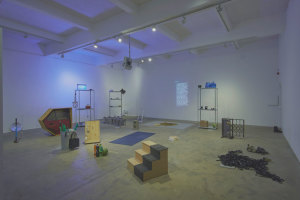 Lawrence Abu Hamdan’s solo exhibition presents a new co-commission by the Beirut-based artist and “private ear”. Featuring three newly designed sound instruments, over ninety sourced objects and an audio work, “Earwitness Theatre” (2018) explores the political effects of listening through the hallucinatory world of the ear-witness. The new commission is presented alongside Abu Hamdan’s recent film “Walled Unwalled” (2018), which together develop the artist’s ear-witness investigation into the Syrian regime prison of Saydnaya, which the artist was invited to carry out in partnership with Amnesty International and Forensic Architecture, Goldsmiths University, London, as part of a broader enquiry. The work on Saydnaya began in 2016. On a practical level, the process involves listening and capturing sounds, which could, and eventually would, help to map out a prison, and to identify the number of detainees and inhuman confinement therein. On an aesthetic level, earwitnessing is how Abu Hamdan can sense and make evident testimonies often considered irrelevant by media outlets and inadmissible within the court of law, such as the experience of darkness, silence, and hunger. Info: Curators: Sofía Hernández Chong Cuy and Rosa de Graaf, Witte de With Center for Contemporary Art, Witte de Withstraat 50, Rotterdam, Duration: 27/1-19/5/19, Days & Hours: Tue-Thu & Sat-Sun 11:00-18:00, Fri 11:00-21:00, www.wdw.nl
Lawrence Abu Hamdan’s solo exhibition presents a new co-commission by the Beirut-based artist and “private ear”. Featuring three newly designed sound instruments, over ninety sourced objects and an audio work, “Earwitness Theatre” (2018) explores the political effects of listening through the hallucinatory world of the ear-witness. The new commission is presented alongside Abu Hamdan’s recent film “Walled Unwalled” (2018), which together develop the artist’s ear-witness investigation into the Syrian regime prison of Saydnaya, which the artist was invited to carry out in partnership with Amnesty International and Forensic Architecture, Goldsmiths University, London, as part of a broader enquiry. The work on Saydnaya began in 2016. On a practical level, the process involves listening and capturing sounds, which could, and eventually would, help to map out a prison, and to identify the number of detainees and inhuman confinement therein. On an aesthetic level, earwitnessing is how Abu Hamdan can sense and make evident testimonies often considered irrelevant by media outlets and inadmissible within the court of law, such as the experience of darkness, silence, and hunger. Info: Curators: Sofía Hernández Chong Cuy and Rosa de Graaf, Witte de With Center for Contemporary Art, Witte de Withstraat 50, Rotterdam, Duration: 27/1-19/5/19, Days & Hours: Tue-Thu & Sat-Sun 11:00-18:00, Fri 11:00-21:00, www.wdw.nl
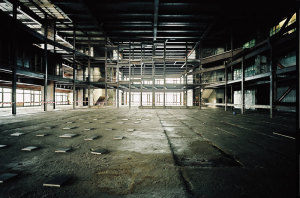 The solo exhibition of the Berlin-based artist duo Nina Fischer & Maroan el Sani “The Active Guest” gathers works from the last fifteen years of their career. The artists have been collaborating on their interventional and situationist art practice since 1993, and their investigations revolve around moving images as both impartial documents and involved narrations of our changing societies. The main protagonists of their projects are often urban spaces and significant buildings that bear the burden of collective memory, upon which the forces of historical transition and turmoil have been engraved. The artists’ poetic-filmic and performative investigations of these sites tackle the idea of revisiting marginalized histories through their artistic reanimation of such places. In our current times, characterized by the lack of hospitality the title of the exhibition suggests a possible role of the artists as “active guests” enacting a notion of universal solidarity wherever they find themselves as residents. Info: Edith-Russ-Haus for Media Art, Katharinenstraße 23, Oldenburg, Duration: 31/1-31/3/19, Days & Hours: Tue-Fri 14:00-18:00, Sat-Sun 11:00-18:00, www.edith-russ-haus.de
The solo exhibition of the Berlin-based artist duo Nina Fischer & Maroan el Sani “The Active Guest” gathers works from the last fifteen years of their career. The artists have been collaborating on their interventional and situationist art practice since 1993, and their investigations revolve around moving images as both impartial documents and involved narrations of our changing societies. The main protagonists of their projects are often urban spaces and significant buildings that bear the burden of collective memory, upon which the forces of historical transition and turmoil have been engraved. The artists’ poetic-filmic and performative investigations of these sites tackle the idea of revisiting marginalized histories through their artistic reanimation of such places. In our current times, characterized by the lack of hospitality the title of the exhibition suggests a possible role of the artists as “active guests” enacting a notion of universal solidarity wherever they find themselves as residents. Info: Edith-Russ-Haus for Media Art, Katharinenstraße 23, Oldenburg, Duration: 31/1-31/3/19, Days & Hours: Tue-Fri 14:00-18:00, Sat-Sun 11:00-18:00, www.edith-russ-haus.de
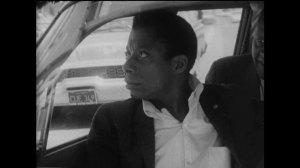 On the occasion of the David Zwirner exhibition “God Made My Face: A Collective Portrait of James Baldwin”, Hilton Als has curated, in partnership with Metrograph, a selection of films and visual excerpts of Baldwin on screen. Spanning the years 1963 through 1982, the films include “Take This Hammer” (1963), a television documentary that follows Baldwin as he witnesses the lives of African Americans in San Francisco. Other films, including “My Childhood Part 2: James Baldwin’s Harlem” (1964) and “James Baldwin: From Another Place” (1973) explore his youth in New York and later periods spent in Paris and Istanbul as part of his self-described time as a “transatlantic commuter”. The latest film “I Heard It Through the Grapevine” (1982), is a personal essay written by Baldwin in which he reflects on his time in the American South during the Civil Rights movement. Info: Metrograph, 7 Ludlow Street, New York, Duration: 1-2/2/19, http://metrograph.com
On the occasion of the David Zwirner exhibition “God Made My Face: A Collective Portrait of James Baldwin”, Hilton Als has curated, in partnership with Metrograph, a selection of films and visual excerpts of Baldwin on screen. Spanning the years 1963 through 1982, the films include “Take This Hammer” (1963), a television documentary that follows Baldwin as he witnesses the lives of African Americans in San Francisco. Other films, including “My Childhood Part 2: James Baldwin’s Harlem” (1964) and “James Baldwin: From Another Place” (1973) explore his youth in New York and later periods spent in Paris and Istanbul as part of his self-described time as a “transatlantic commuter”. The latest film “I Heard It Through the Grapevine” (1982), is a personal essay written by Baldwin in which he reflects on his time in the American South during the Civil Rights movement. Info: Metrograph, 7 Ludlow Street, New York, Duration: 1-2/2/19, http://metrograph.com
